Time lapse effect
with slow
shutter speeds
If we have the camera in a stationary on a tripod and take the image at a fast enough speed as the subject enters the frame, we will stop the action and have a sharp image. Then as the shutter speed is progressively increased to a longer time, the moving subject begins to look blurry and out of focus. But as we continue to decrease the exposure time, there is a point where the blurring of the subject looks convincing and as though the subject has momentum. However if we keep increasing the shutter speed, there is another point where the moving subject disappears completely and we only get the background. So, there is an optimum shutter speed to gain the blurred speed effect. Of course this optimum shutter speed depends how close you are to the subject, the focal length of the lens and speed of the subject. Rather than have the camera in a stationary position on the tripod, if we follow the movement of the subject, release the shutter and keep following the subject during the exposure, the subject can be recorded relatively sharp while the background is blurred. There is a bit of experimenting needed with these techniques, but start with a shutter speed of about 1/10 sec and experiment from here.
The time lapse effect is achieved through a very long exposure usually
during the night or at dawn or dusk – This might vary from as
short as 1min but could be even longer than 12 hrs or at night.
To do this set your camera
on a sturdy tripod and the shutter on either B or T. You can also of
course lie the camera on the ground facing up at the sky or on a solid
support base.
Some cameras have two settings – B and T.
When we set the shutter to B the shutter will stay open but you will
have to keep it depressed with a shutter release cable, while on T it
will stay open until you click it again.
Remember the slower the ISO
setting the longer the exposure time becomes and the more you stop the aperture of the lens down the
less light that gets in and again the exposure becomes longer.
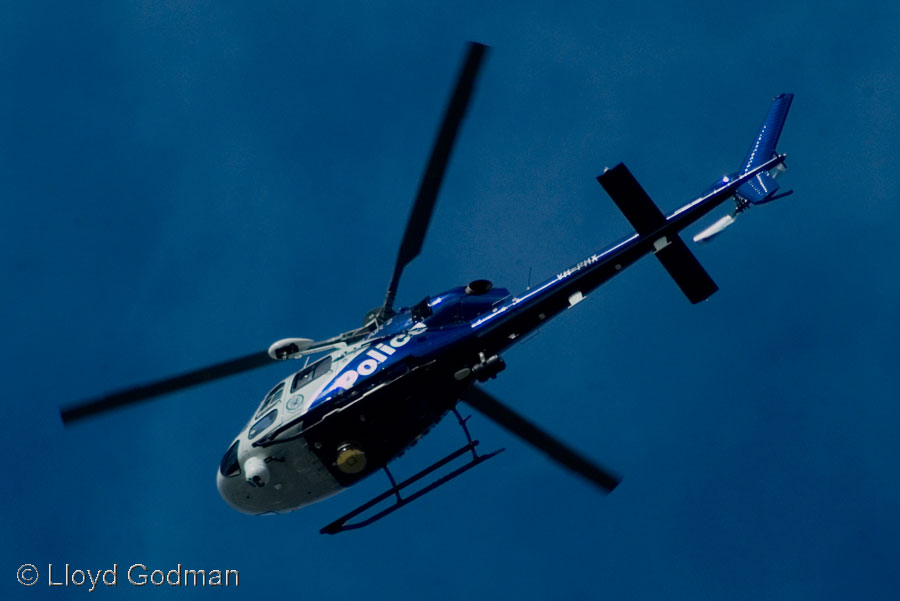 |
|
in this image taken at f 6.7 @ 1/1000 second - 300 mm lens 400 ISO hand held - we see the helicopter is relatively sharp and each of the rotor blades are visible. |
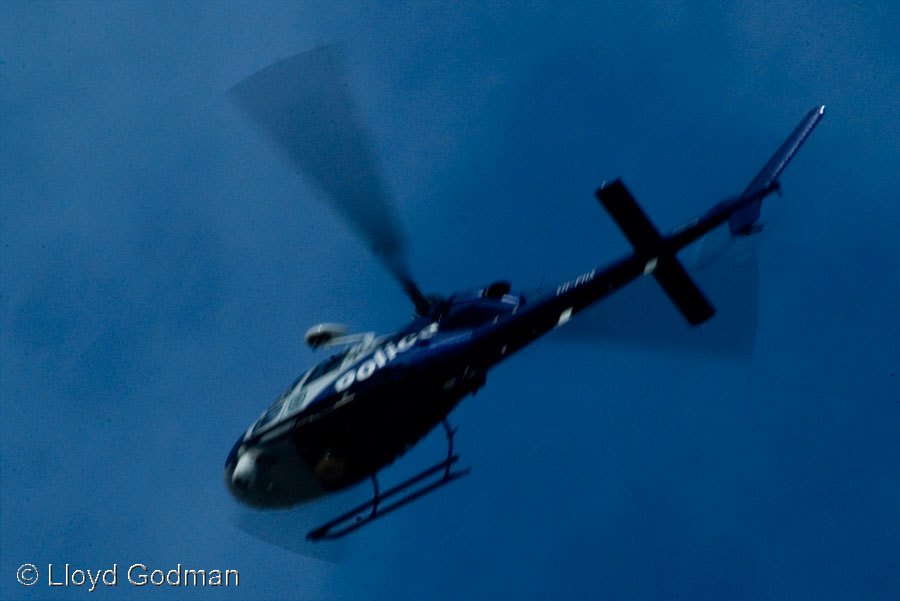 |
|
in this image taken at f 22 @1/90 second 300 mm lens 400 ISO hand held - not only do we see the helicopter blurred from camera movement, but the rotor blades are also blurred. |
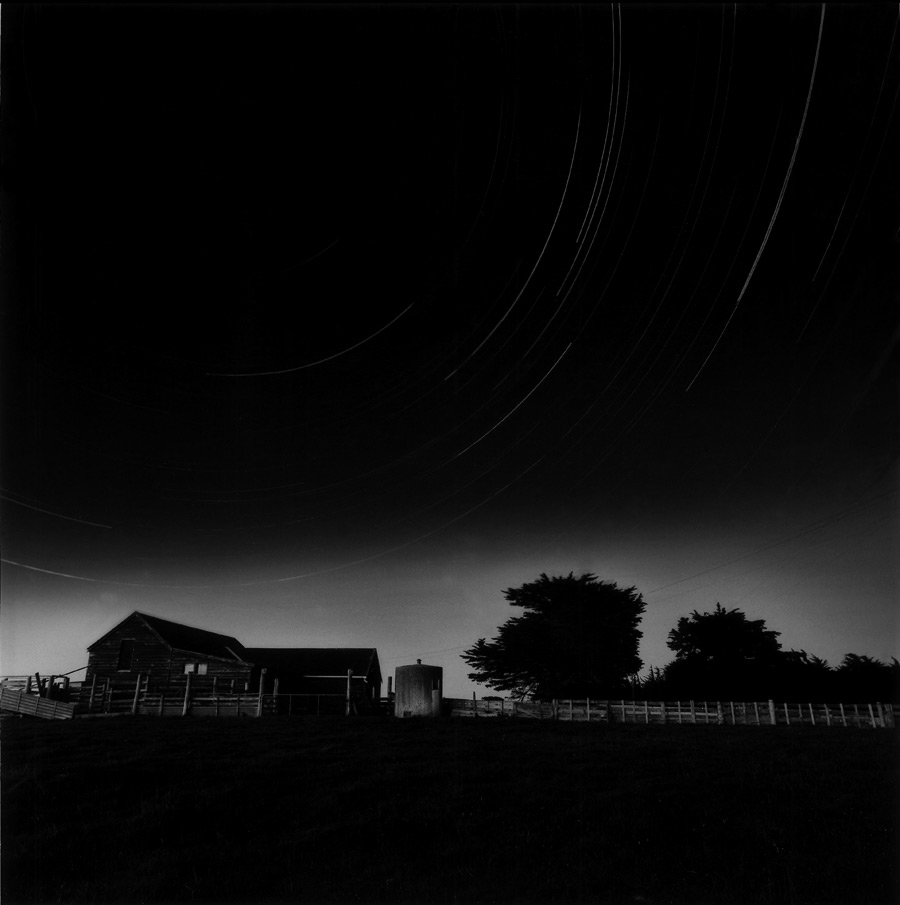
This image with a 10 hr exposure has been shot with film |
|
A long exposure of several hours
where there of the stars will produce a series of circles in the
sky which are actually the trails of the stars as the earth rotates.
Sometimes I have left
the camera exposing all night - I set the camera up under a tent
to keep any dew off the camera and lens.
Digital or Film ?
There is no problem working with film in fact in some situation film has advantages over digital. For instance if you wanted to expose for several hours at night digital cameras will shut down after a certain period – this is because they need power to keep the shutter open and the battery run flat very quickly. So your old film camera is not obsolete yet.
However when working with film you need to consider reciprocity failure. |
 |
|
You
can also leave the shutter open while you paint a subject with light
– perhaps from a hand held torch or several flashes with a
hand held flash. Coloured filters can be placed over the light with
great effect. This technique is called painting with light. |
While we can simply leave
the shutter open to expose a static scene to record, we can also use
the technique to create images with trails of light from moving objects.
Perhaps airplane trails, car lights etc. Flowing water also works well.
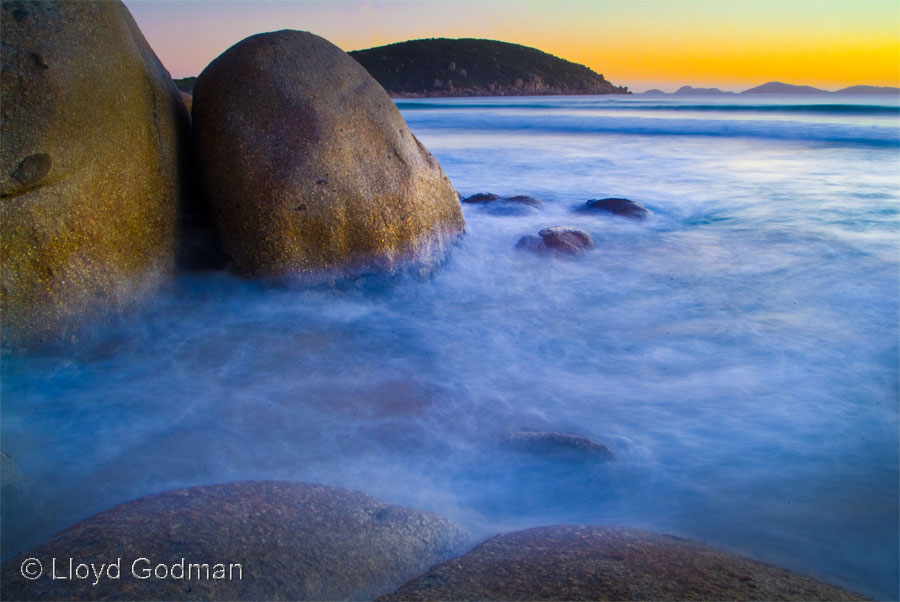
|
|
We see many time lapse images of a bush scene with water flowing down a stream or an ocean scene where the water has turned to a misty like material. These are usually shot after sunset when the sun has disappeared and there is still some ambient light in the sky.
Here the exposure is 30 seconds at dusk after the sun has set and the light level is much lower. |
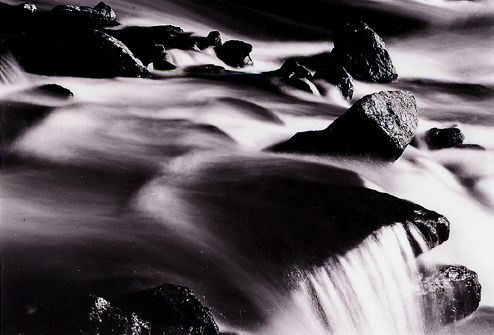
|
|
However , I used this technique
to create enigmatic images of the Kawarau River in full sunlight.
By using 3 ISO film, an aperture of f32 and a 16x neutral density
filter the exposure was about 1 min. |
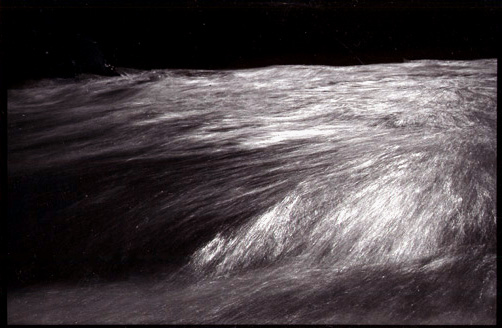 |
|
This image is from the same series - and again by using a series of neutral density filters, stopping the lens right down I was able to expose in full sunlight with the sun reelecting from the water like a series of sinus for more than 1 minute. |
The use
of slow shutter speeds can give impact to an image - when you use these
you need to play with the shutter speed to gain the required effect
- if the shutter speed produces an image with a small amount of blur
the image can be unconvincing and just look un sharp. However, when
we use a much longer shutter speed the subject can gain a sense of visually
vibrating which can be inter testing.